Nature » Animated nature » Fauna
Fauna
Birds
Out of 10 species of woodpeckers found in Poland, 9 are nesting in the MNP. The most numerous is Great Spotted Woodpecker Dendrocopos major, the second one is Black Woodpecker Dryocopus martius .
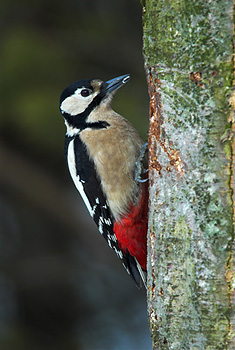
Spotted Woodpecker (phot. Agnieszka and Damian Nowak)
There are also two the rarest species among Polish woodpeckers. One of them is White-backed Woodpecker Dendrocopos leucotos occupying the natural wet riverside forests. Even rarer is Three-toed Woodpecker Picoides tridactylus . This boreal-mountainous element of our fauna can be found in the coniferous tree stands and its number do not exceed several pairs.
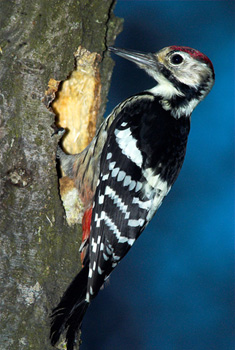
White-backed Woodpecker (phot. Agnieszka and Damian Nowak)
The avifauna of the watercourses is represented by 5 species: Kingfisher Alcedo atthis, Little Ringed Plover Charadrius dubius, Common Sandpiper Actitis hypoleucos and two species of birds typical for the mountainous habitats. These are: Dipper Cinclus cinclus whose number is 0,13 pairs per 1 km of stream and slightly more numerous Grey Wagtail Motacilla cinerea – 0,41 pairs per 1 km.
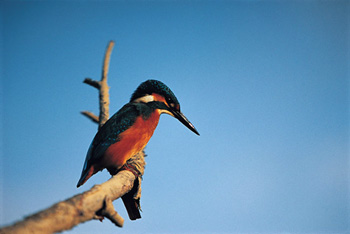
Kingfisher (phot. Marek Keppert)
Quite numerous in the Park are Raven Corvus corax and Black Stork Ciconia nigra. Raven reaches the density of 17 pairs per 100 km2, while Black Stork – 5,5 pairs per 100 km2 . In both cases the density is the highest in Poland.
Very important birds in the Magura National Park are those occupying the open country. The most important species are Corncrake Crex crex, Quail Coturnix coturnix and Red-backed Shrike Lanius cullorio.
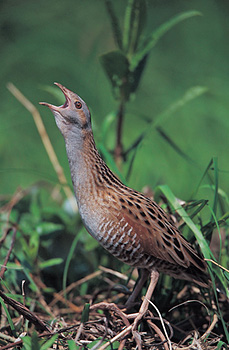
Corncrake (phot. Grzegorz Lesniewski)
The Beskid Niski Mts. and the Magura NP itself are the essential areas for migrant birds. One of the most spectacular migrant is Common Crane Grus grus , which stays for night’s rest during spring and autumn period in flocks of a few dozen to a few hundred individuals. The wide valley of the Wisloka river is a very important place for rest and the base of the feeding ground for the passerine birds which in autumn fly over to their winter habitats. Each year near the Myscowa village, ornithologists from the Carpatica Action ring over 3000 birds of a few dozen species.
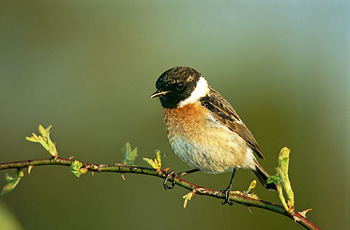
Stonechat (phot. Agnieszka and Damian Nowak)


